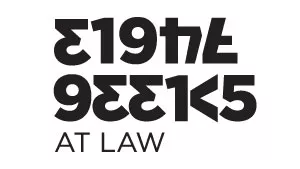- within Corporate/Commercial Law topic(s)
- in European Union
- with readers working within the Advertising & Public Relations industries
Decoding AI
Artificial Intelligence (AI) is the technology that enables machines to mimic human intelligence. It is the theory and methods involved in building computer systems that can learn, reason and perform tasks without explicit programming or commands.
How Does AI Work?
AI systems are trained. They are fed large amounts of data which they analyze to recognize correlations, trends and patterns.
A system trained on millions of images of cars can then identify/recognise a car and differentiate it from other objects like a bicycle or a dog. A system could also be trained on a company's products and past conversations with customers to allow it to interact in a chat box. It would analyze past questions and responses to predict the most appropriate response to a present question.
The process that allows computer systems to consume information, identify patterns and make predictions on how to complete the required task (without explicit programming) is referred to as machine learning.
Machine learning is a branch of artificial intelligence.
Deep learning is a type of machine learning that uses artificial neural networks (similar to the neural networks in the brain) to process more complex patterns.
Generative AI is a more advanced development in the field that allows AI systems to not just replicate, but create entirely new, original content such as text, images, audio, code, or music.
Large Language Models (LLMs) are AI models that understand and can generate human-like text. They can be used to enhance Generative AI technology. Examples of LLMs include OpenAI's ChatGPT and Google's Gemini.
Why is AI so in Demand?
The potential applications for AI are endless.
AI systems can be used to augment just about any area or industry. From disease diagnosis to self-driving cars, AI systems can now perform relatively complex human tasks with more speed, accuracy and efficiency. This has sparked intense debates about AI's potential to replace human roles, akin to the historical displacement of factory workers by machines.
AI and the Law
As technology, particularly AI, rapidly evolves, its impact on existing legal frameworks becomes increasingly pronounced.
The laws that currently exist could not have anticipated the level of innovation that we see today.
Today, we see a disruption of old laws and the emergence of new issues which have triggered the reevaluation of legal principles as we know them.
Chief amongst the concerns surrounding AI are its implications on: Intellectual Property, Data Protection, Deep Fakes and Responsible Use.
The Legal Implications of AI
Intellectual Property (IP)
- Intellectual Property law safeguards creations of the mind such as literary and artistic works, music, designs, symbols, names and images.
- Traditionally, IP laws protected creations of the human mind.
- The emergence of generative AI has raised complex questions. One prominent question is whether original works generated by AI qualify for protection and if so, who is the author/creator/inventor? Who owns the rights? The AI system, the creator of the AI system or the person who engineers the prompts and uses the AI system?
Data Protection
- Existing Data Protection laws regulate the collection and use of personal data and aim to protect the rights of data subjects. There are established rules around data collection, data processing and the corresponding consent requirements.
- AI systems, however, are trained on vast amounts of (personal) data and can correctly predict and infer information.
- This challenges the existing parameters for data collection, data minimization and purpose limitation and further raises concerns on privacy, consent, and transparency.
Misinformation/Deepfakes
- Deepfakes are computer-generated videos, images, or audio that use AI to manipulate the appearance, voice, or behaviour of people or to depict fictitious events. These have had ramifications across many domains including fraud, blackmail, human right abuses, election manipulation, erosion of public trust and several other areas.
- Some of the issues that have arisen have been around the remedies of victims of deepfakes and whether generated explicit images/videos of people amount to defamation.
Responsible Use and Ethics
- Due to the vast scope of AI applications across multiple sectors and regulated spaces, it is difficult to imagine regulation by any single entity.
- In the absence of clear regulatory frameworks and established laws, the responsibility for overseeing development and instilling proper safeguards has fallen largely upon the creators, developers and owners of AI systems themselves. While these groups possess the necessary understanding of the technology, and are arguably in the best position to identify and neutralize the risks, this self-regulation model raises concerns about potential conflicts between self-interest and public interest.
- Currently, principles, guidelines and bills centered around privacy, preventing bias, transparency, consent, and the creation of categories and standards of "safe" AI are being developed.
The Road Ahead
Artificial Intelligence stands out as one of the biggest breakthroughs in technology of our time. Much like any great invention, there is the possibility to do great good or great harm.
The development of systems that can learn, self-correct and modify themselves is unprecedented. At its peak, AI systems will be able to operate autonomously, without human intervention.
The rapid pace of advancement prompts questions about regulatory capacity. Can traditional regulatory frameworks keep up with AI's evolution, or should we be overhauling traditional norms for more flexible, dynamic oversight mechanisms?
For now we continue to monitor progress, address emerging issues and create innovative solutions that allow us to harness the tremendous potential of AI responsibly.
The content of this article is intended to provide a general guide to the subject matter. Specialist advice should be sought about your specific circumstances.



